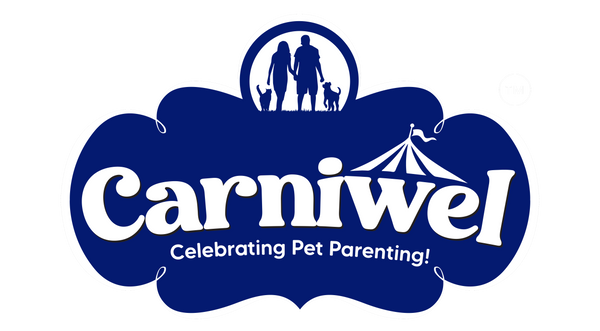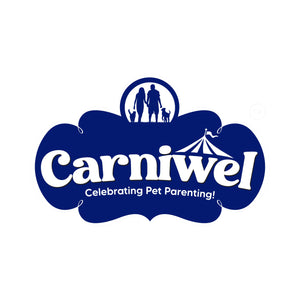Introduction
Puppies are full of joy and fun. As a pet parent or a sibling to a pet, an amazing way to understand and exercise your relationship is through training. Training is more than teaching commands; it’s about shaping your dog’s mind, behavior, and bond with you. It is also a wonderful exercise and mental stimulation for your dog.
The mental stimulation that your puppy gets from training and socialisation is an essential ingredient in their behaviour, health, and activity. To know more about this, read our blog on cognitive development in puppies .
How to Train a Puppy?
Puppies are like sponges in their early months, soaking up experiences and lessons. What they learn can influence their adult lives too, as researchers have found.
1st Stage:
Begin consciously training your puppy when they are between the ages of 8 and 16 weeks. Start by creating the right environment for your puppy. This helps them feel secure while they understand and learn the world around them. Trust largely influences their reactions to your training. Get them accustomed to:
- Noises, gestures, and other environmental triggers
- People, socialization, body handling, and vet visits.
2nd Stage:
Once your puppy has understood and adapted to their environment, begin training them in impulse control. Teach them to sit or to take their paws off things.
How to train your puppy to sit:
- Step 1: Hold dry puppy food or treats in your hand.
- Step 2: Move it close to your puppy’s nose so he/she can smell it.
- Step 3: Now move the treat slowly to the top of their head. This should get them to sit.
- Step 4: As soon as your pup’s bottom touches the floor, praise them and give them the treat.
How to train your puppy to get “off”
- Step 1: Use a treat to get your puppy’s attention.
- Step 2: Move the treat until your puppy puts all four paws on the floor.
- Step 3: Praise them and give them the treat. Remember to do this consistently and only when all four paws are on the ground.
- Step 4: Once you’ve set this habit, introduce the word “off” and repeat.
Keep it short: Puppies have short attention spans of 5 to about 10 minutes. Keep each session short for the best results.
- Positive reinforcement: Reward good behavior immediately with treats, play, or affection.
- Consistency is key: Use the same words and cues to avoid confusion.
Remember to be patient and repeat this multiple times. Positive reinforcement and consistency are the key factors.
Tip: Use dry puppy food or functional treats as training rewards. This links meals to positive experiences while keeping your puppy motivated.
Stage 3:
When your pup is 6 months old, its time to introduce them to “polite play” where they can exercise their impulse control better. Here they can learn to nurture their bond with you through play. You can also show them how rough they’re allowed to get. Make sure not to reward biting or aggression.
Stage 4:
Now you can house train your dog. Teach them where and when they can relieve themselves. Use training pads for ease.
Stage 5:
This is a good time to start crate training your dog or teaching them to be alone in the house. Start by leaving them alone or in a crate for half an hour and then steadily increase the time frame.
Stage 6:
Once you’ve come this far, your relationship with your puppy is based on trust and confidence. You can now teach them to come when you call (“recall”).
Step 7:
You can now start your dog off on impulse training. This is a life long process. Sometimes you may also find that you may need to retrain your dog. This is normal, remember to do this with patience and use healthy, functional treats.
Nutrition: Fuel for a Smarter Puppy
Just like school children need proper nutrition to learn, puppies depend on brain-boosting nutrients to grow mentally sharp. If you ask yourself how to feed a puppy during the training stages, here are some key nutrients they need to keep their minds active:
- Choline – Supports memory and brain structure.
- Omega-3s (EPA & DHA) – Aid neural development and sharper focus.
- Antioxidants – Protect growing brain cells from oxidative stress.
This is why Carniwel Fresh Chicken Puppy Food is a smart choice. Enriched with fresh chicken and Antarctic krill, it provides a rich source of omega-3s, DHA, EPA, and antioxidants. These nutrients support sharper memory, quicker adaptability, and overall mental growth.
Why marine proteins matter: Marine proteins, especially Antarctic Krill, are superior because their nutrients are more bioavailable, meaning your puppy absorbs and uses them more effectively.
Training Adult Dogs
Many pet parents assume adult dogs are harder to train, but with patience, they can learn new skills too. Training keeps adult dogs alert, confident, and mentally stimulated.
- Break old habits gently: Redirect rather than punish.
- Add challenges: Try puzzle feeders or DIY, advanced commands, and scent games
- Stick to routines: Adult dogs thrive on structured schedules.
- Refresh socialization: Reintroduce them to new people, places, and dogs.
For large breeds prone to joint stress, EPA & DHA from Antarctic Krill also reduce inflammation and support mobility, keeping them active learners well into adulthood.
1. How to train a puppy at home?
Start with simple commands like “sit” and “stay,” use positive reinforcement, and reward with dry dog food or chewy treats. Keep sessions short (5–10 minutes) and consistent.
2. Why is DHA and EPA important for puppies?
DHA and EPA (Omega-3 fatty acids from Antarctic Krill) are essential for brain development, memory, and focus. They help small and large puppies learn faster and respond better to training. Carniwel’s dry dog food contains exactly these ingredients so that you puppy gets the best of health in every bite.



 https://carniwel.com/pages/about-us
https://carniwel.com/pages/about-us


